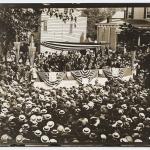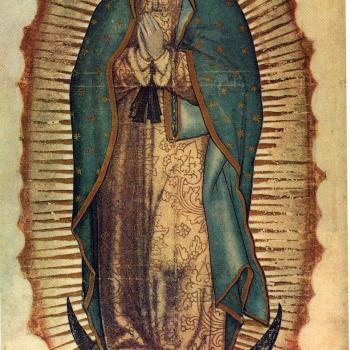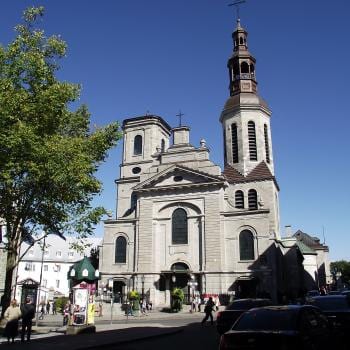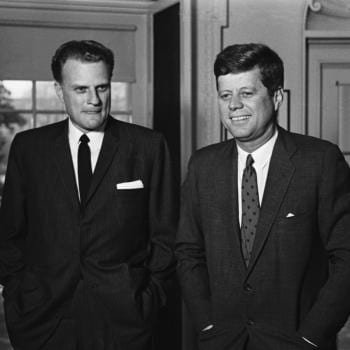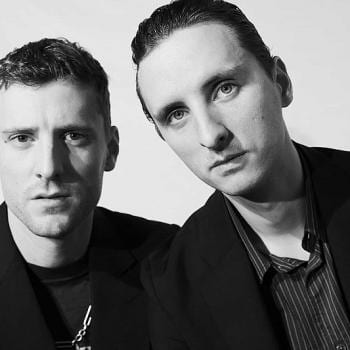On the one hand, the further revelations of cases of sexual abuse and episcopal cover-up has led the editors at National Catholic Reporter to size up the crisis this way:
The culture of the Catholic clergy and the state of the episcopacy have come under intense scrutiny as a result of the crisis, especially as it has dragged on for more than three decades and spread through the global community. And neither the culture nor the leadership level of the church comes off looking good.
We’ve posted an open letter to the U.S. bishops saying: “There is nowhere left to hide.” “It’s over,” we wrote. “All the manipulations and contortions of the past 33 years, all the attempts to deflect and equivocate — all of it has brought the church, but especially you, to this moment. It’s over.”
What’s left to do is the only thing the bishops can’t be forced to do, and that is the interior work familiar to all of us because of our shared sacramental tradition: a deep examination of how the culture got to the point where bishops could turn their backs on abused children to hide the guilty clerics. Confronting that question honestly will go a long way toward pointing the episcopacy in the direction of needed reforms.
On the other hand, compared to Thomas More who died a Roman Catholic martyr by refusing to take the Oath of Supremacy that made not the pope but Henry VIII the head of the Church of England, today’s crisis is a piece of cake. Just consider the litany of papal viciousness that Matthew Schneider, a Roman Catholic blogger, describes in his roll call of Renaissance and Reformation popes, the very same Bishops of Rome to whom More remained loyal:
Pope Sixtus IV
More was born in 1478 under the reign of Pope Sixtus IV, who was guilty of nepotism and scandal. Sixtus made relatives into Cardinals and civil lords. He even participated in an attempt to overthrow the Medici family in Florence. He also reaffirmed the concessions previous Popes had given allowing the Portuguese to have slaves in foreign colonies. Sixtus created 23 cardinals, which was a huge number as his conclave only had 18 cardinals total; however, most of these were from top aristocratic houses, not holy priests and bishops.Pope Innocent VIII
As More reached school age in 1484, Innocent VIII took the Papal throne. Innocent pursued the inquisition and searching out witches. He had two illegitimate children from before entering the clergy. He married his son into the Medici family in exchange for giving the cardinal’s hat to a 13-year-old Medici who would become Pope Leo X. . . .Pope Alexander VI
Alexander VI ascended the Papal throne in 1492 as one an opulent Renaissance Pope who lived right at More’s prime formative years. He was definitely more king of the Papal states than Holy Father of the universal Church. He dedicated most of his time to wars and political considerations, not morals or catechesis.At his election, only 4 of 27 cardinals were career churchmen: most were relatives of previous popes or crown appointees. One of his rivals for Pope arrived with 300,000 ducats of gold from foreign leaders for conclave bribes.
In fact, his son, Cesare Borgia, lead Alexander’s armies and crushed uprising. Cesare’s methods were such that Machiavelli uses him as the prime protagonist of proper Machiavellian statesmanship (!). Alexander cast a cardinal into a dungeon over a dispute that lead to armed conflict, and a month later poisoned him.
Alexander had two mistresses and fathered at least nine children with at least three different women. He was nepotistic regarding positions. One of the cardinals he created was his mistress’s brother. His son Cesare “inherited” Alexander’s previous archbishopric. He arranged the best marriages for his family, going so far as to annul his daughter’s marriage so he could remarry her to a different noble. He set his children up so well that many later royal lineages can be traced back to his kids….
Pope Leo X
Next comes Leo X, famous for the line “Since God has given us the papacy, let us enjoy it.” In 1513 when he became Pope, More was undersheriff of London and slowly working up the civil service to be Under-Treasurer of the Exchequer when Leo died in 1521 (“Treasurer of the Exchequer” is similar to US Secretary of the Treasury). He was the son of Lorenzo the Magnificent, ruler of Florence and lived like it. He was a cardinal at 13. As Pope, he used the Papal army and funds to secure his nephew as Duke of Urbino. He spent money as fast as he could and borrowed without a second thought.Leo oversaw the breakoff of Martin Luther, and large sections of modern Germany and Scandinavia started separating from the Catholic Church. He seemed more focused on Italian politics than the loss of northern territories to Protestantism.
As far as I could research, Leo was probably chaste although this is a topic of debate.
Pope Adrian VI
Adrian VI only ruled 20 months (1522-23), and tried to reform the Catholic Church administratively in response to the crisis. Unfortunately, his short reign and resistance from others in power meant this reorganization didn’t happen. His claim to fame is being the last non-Italian Pope until John Paul II and only Dutch Pope ever.Pope Clement VII
1523 saw the return of powerful Italian families to the Papal throne. During his reign, Thomas More would be Speaker of Parliament, Chancellor of the Duchy of Lancaster and Lord Chancellor (second to the king), but by Clement’s death, he will have spent five months imprisoned in the Tower of London.Clement was caught at the worst time to be Pope and didn’t manage to navigate a tough situation perfectly according to historians. He lost much of Northern Europe to the Lutherans and then England to Henry VIII. The two most powerful Christian kings asked him to take sides and he was indecisive until Charles V sacked Rome and imprisoned him, after which he allied with Charles (!).
Pope Paul III
Paul III came to power as More’s fate was sealed. Paul had taken a mistress early in his clerical life and had five children by her: he even made two grandsons into Cardinals. He did start to take action to reform the Church but Thomas wouldn’t live to see him preside over the start of the Council of Trent, a decade after his death.
That record makes today’s pope and bishops look holy by comparison. It also makes Luther and fellow Protestants look fairly astute.

